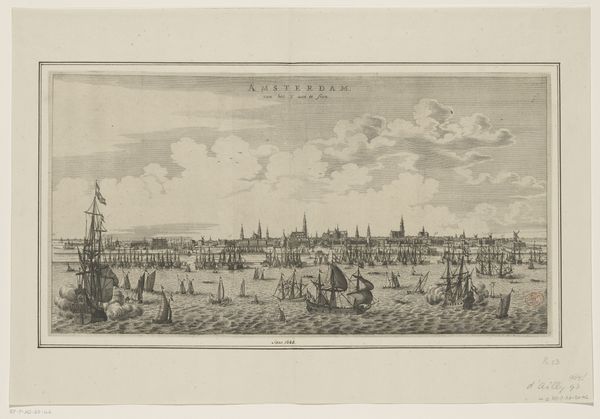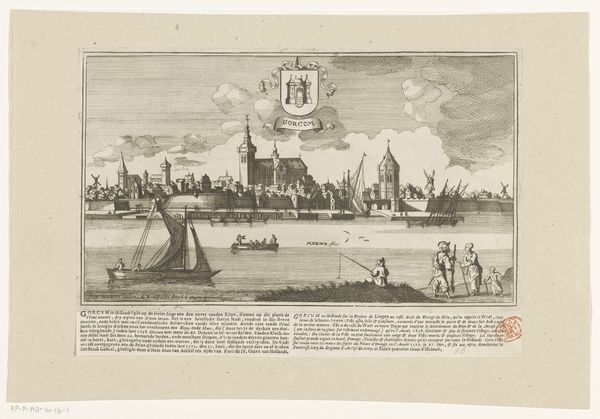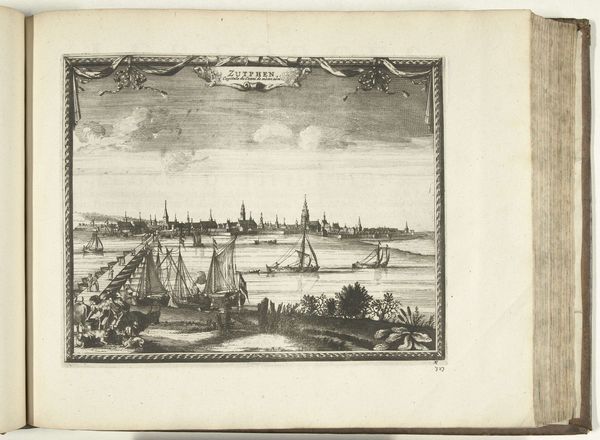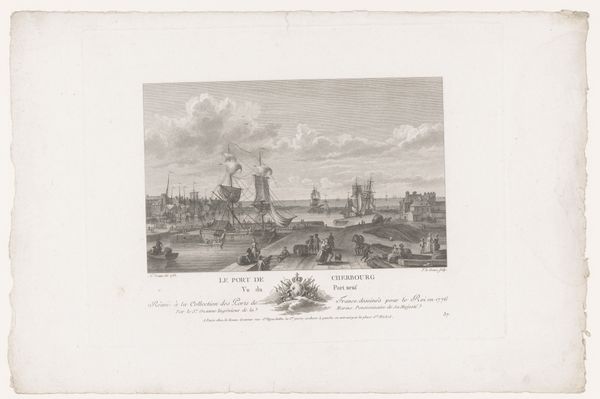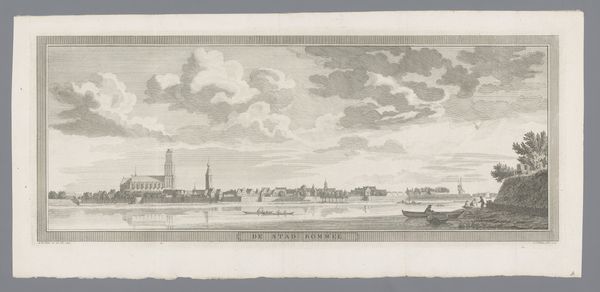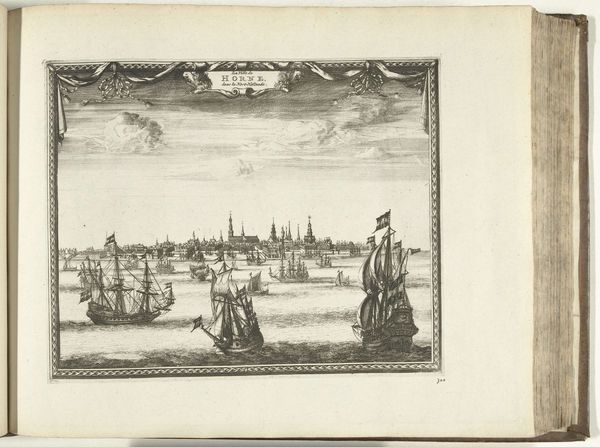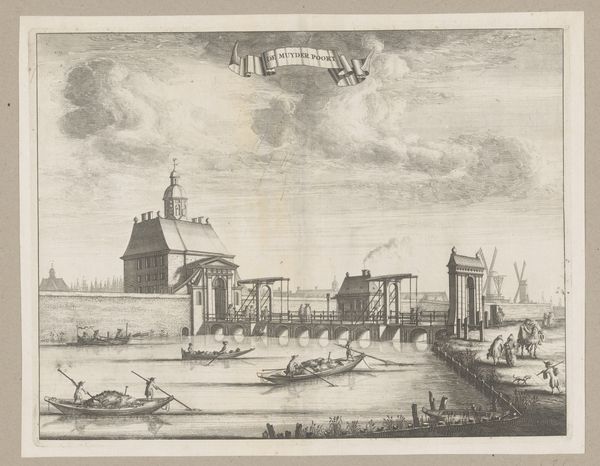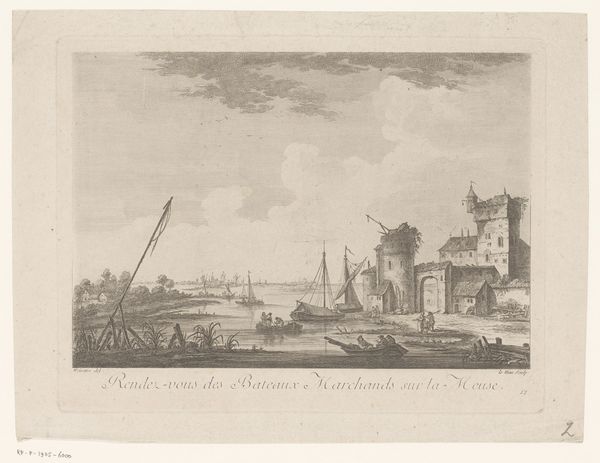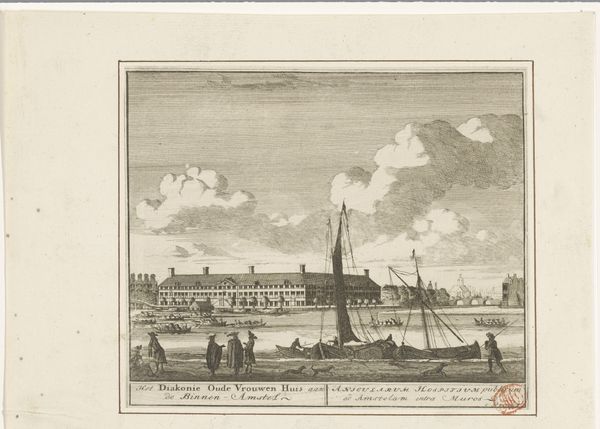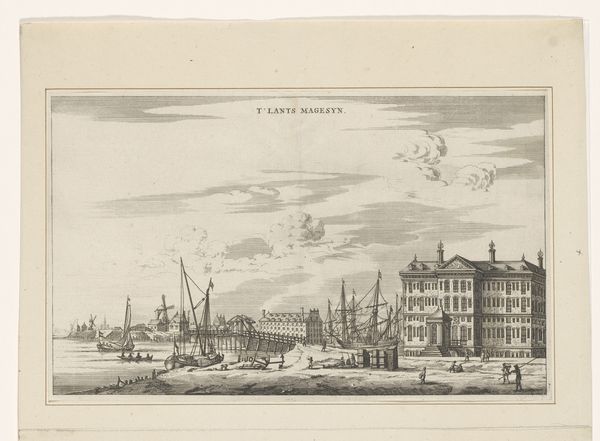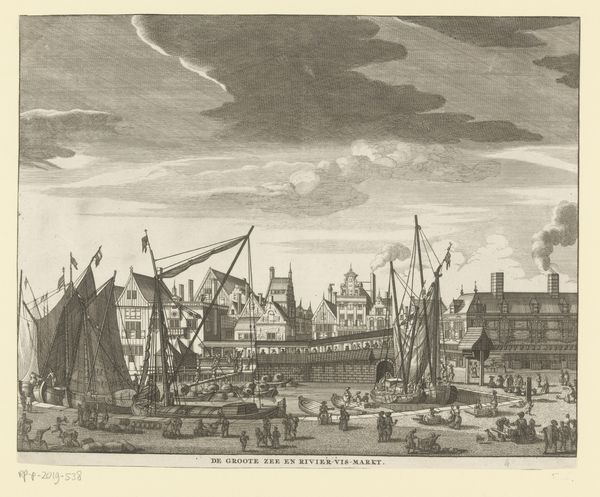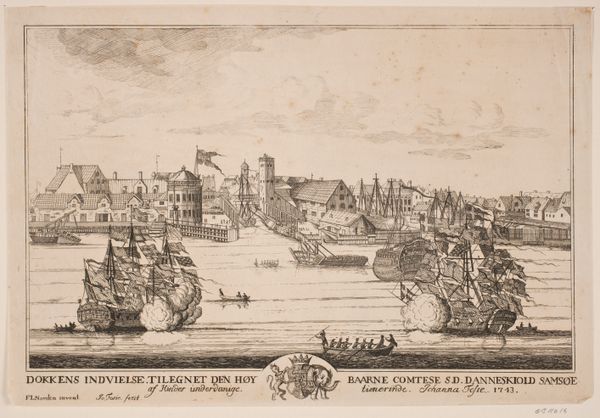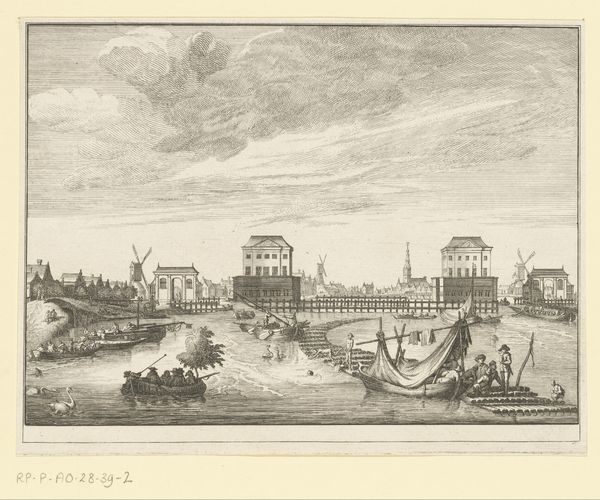
print, engraving
#
baroque
#
dutch-golden-age
# print
#
landscape
#
line
#
cityscape
#
engraving
Dimensions: height 249 mm, width 347 mm
Copyright: Rijks Museum: Open Domain
Editor: This is "View of the Former Fort Zeeburg near Amsterdam," a 1663 engraving by Jacob van Meurs currently housed at the Rijksmuseum. It's interesting how much detail is packed into a small, printed image. What strikes me is how this image speaks about labour, both in building and transport, in its depiction of boats alongside the formal structure. What do you see in this print? Curator: Well, it immediately strikes me as a testament to the labour embedded in creating these prints. Think about the material process – the metal plate, the tools used to incise the image, the printing press itself. These weren’t just readily available; they were crafted, refined, and represented a significant investment and material culture in 17th-century Dutch society. Consider the socio-economic implications of this relatively accessible medium during that period; it democratised access to images. Who do you imagine was purchasing these prints, and what purposes might they have served? Editor: That’s a great point about accessibility! Thinking about the consumers, I imagine it was mainly merchants, the growing middle class. Prints like these might have served as decoration, perhaps even as records of their travels and successes within an expanding mercantile economy. Curator: Precisely. And the image itself reflects that very mercantile activity. Notice the boats; they aren't just pretty details. Each vessel represents a network of trade, resources extracted from distant lands, the labour of sailors and merchants – all essential ingredients to the economic system which is on the rise during that time. Do you see it that way? Editor: Yes, absolutely. And that fort...it’s not just a landmark. It represents control, power, and the protection of these trade routes. Curator: Indeed. Every line in this engraving points to an intricate system of material production and consumption that fueled the Dutch Golden Age. Editor: So, beyond the surface beauty, the print acts as a visual document of material history. Thanks! It really adds a layer of complexity to my understanding of the work. Curator: Precisely, seeing art as a result of specific economic structures gives us a glimpse of the true story behind it.
Comments
No comments
Be the first to comment and join the conversation on the ultimate creative platform.
